Have you noticed your dog putting his paw on you when you stroke him? Or while you’re sitting on the sofa? Keep reading to find out why!
Dogs use their paws to communicate. They have evolved over thousands of years alongside humans, so they have an extraordinary capability to apply this form of communication to us – a completely different species.
There are several reasons why your dog might be putting his paw on you. To uncover the answer, we need to look at both the context (i.e. what’s going on in the dog’s environment) and the dog’s overall body language.
Contents
5 Reasons Your Dog Might Put Their Paw On You
“I Want Attention!”
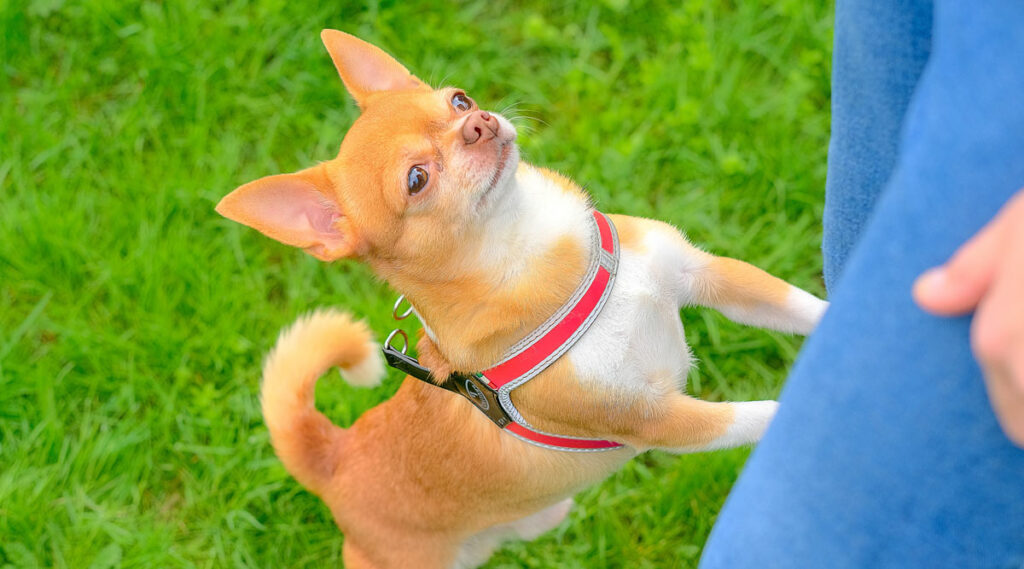
Dogs thrive on human companionship. We’ve bred them to be dependent on us for everything – including fun and social interaction – so they have had to develop ways to let us know when they want to interact.
For example, my dog tends to put her paw on me when I’ve been busy for most of the day. She’s asking me to play and giving me a gentle reminder ‘hey I’m here and I have needs too!’
That’s fair enough. As responsible dog parents, we should ensure their needs are met. Most likely this behaviour has also been reinforced in the past – maybe intentionally (responding by playing with the dog) or maybe unintentionally (giving eye contact or laughing).
Related Article: Why Does My Dog Always Go Between My Legs?
“I Want Food!”
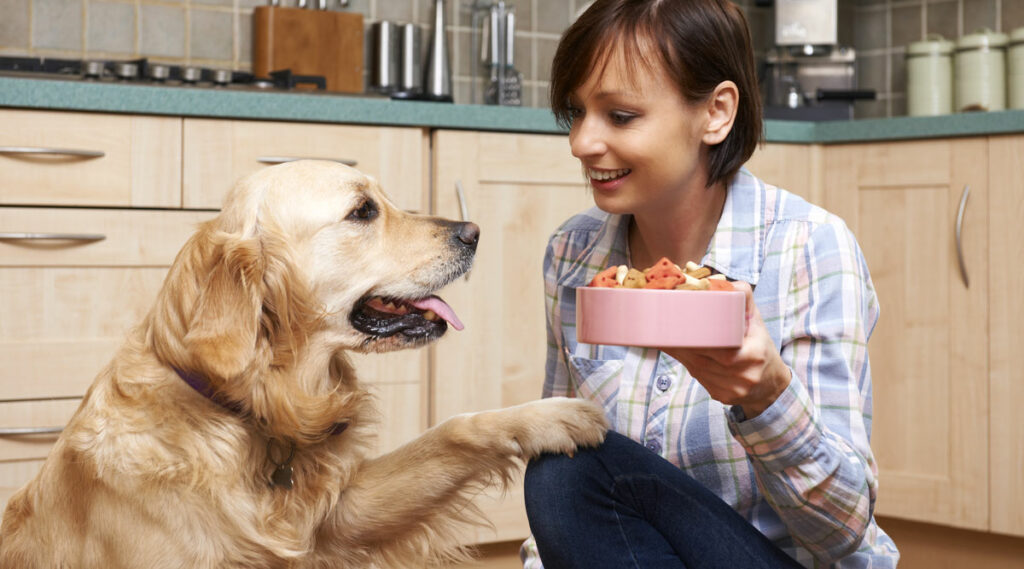
Similarly to the message above, your dog might put his paw on you because he’s hungry. It always amazes owners how dogs seem to be able to tell the time! Check the clock next time your dog puts his paw on you and see if he is pre-empting dinner.
Of course, most dogs would eat all day if they could. So make sure you don’t respond to continual pawing if it’s related to food. If you repeatedly feed your dog whenever he paws you, they could become overweight, leading to many health issues, such as obesity, diabetes, and heart disease.
Related Article: Why Does My Dog Kick Me?
“I’m Feeling Insecure!”
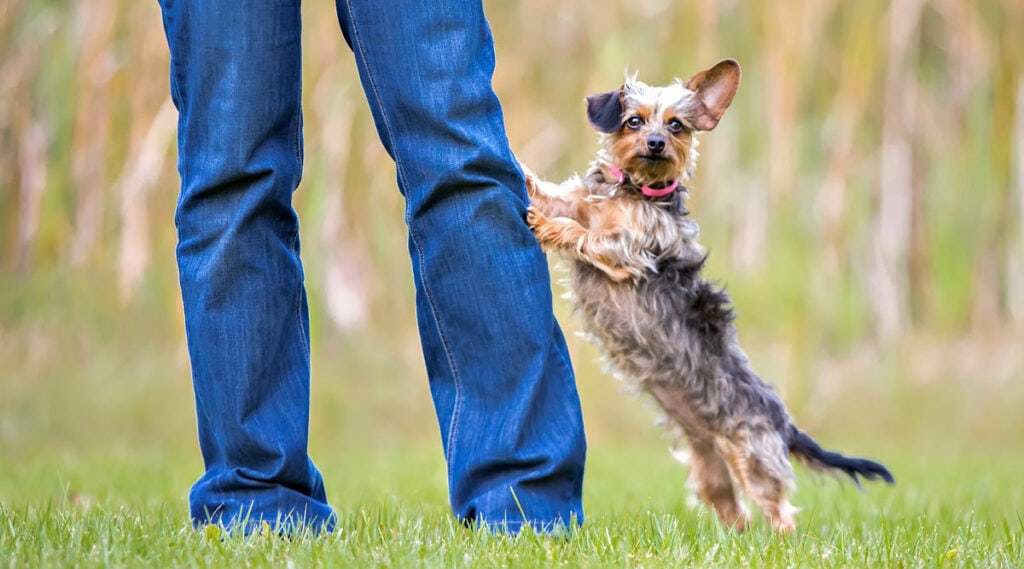
A raised paw in dog language can signal your dog is feeling stressed. Look at the rest of your dog’s body language – is he showing other signs of anxiety such as lip smacking, yawning and flat ears?
If so, think about why he might feel that way. Was there an argument in the household? Did you lose your temper with him? Is he in a new environment?
The best thing you can do is offer him reassurance and a positive distraction, such as play or a treat. However, if he is very worried, he may not want to play or even take food. In this situation, try to identify what he might be feeling scared about and calmly remove him from the situation.
Contrary to popular belief, supporting and reassuring dogs when they are worried will not make the behaviour worse. In fact, reassurance actually helps!
Related Article: Why Is My Dog Being “Clingy”? 8 Possible Reasons
“I Love You”
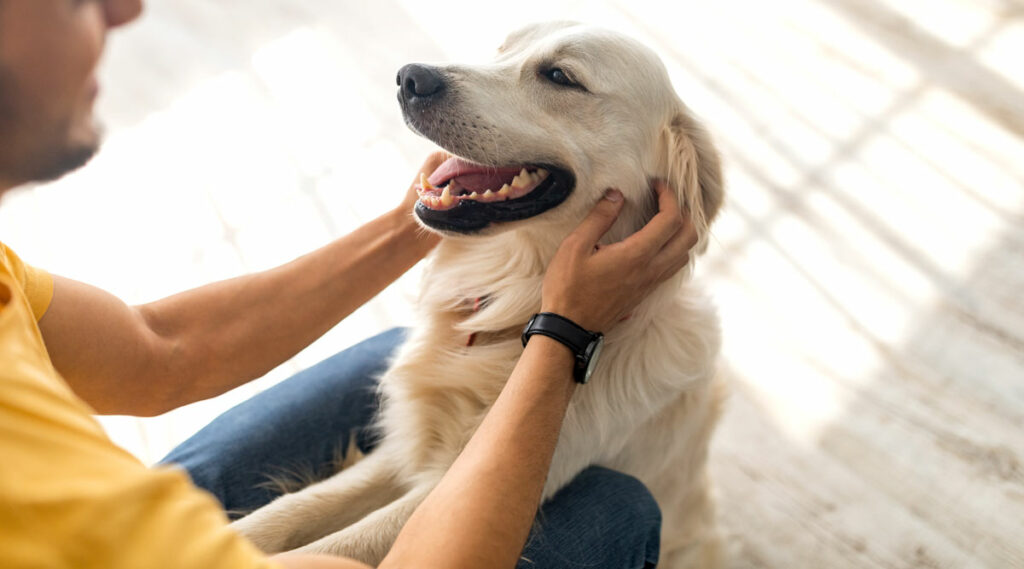
Studies have shown “feel good” hormones such as oxytocin are released by both human and dog during a petting session.
By putting his paw on you whilst you are stroking him, he is further extending contact and reciprocating affection back. Aww…
“I’d Like Some Space”
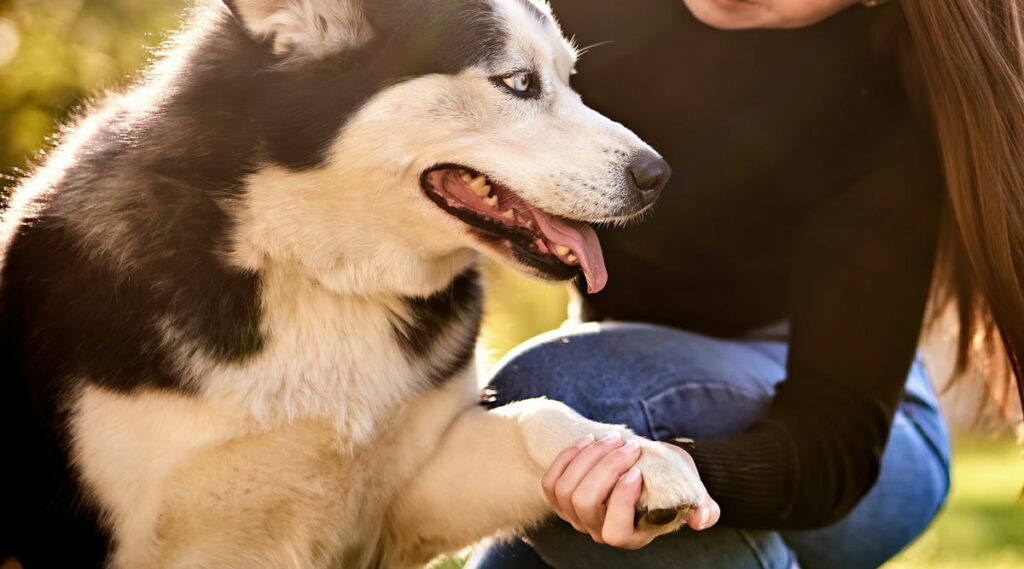
If you’ve been petting your dog for a prolonged period, or he is trying to rest, then he may place his paw on your hand or arm to ask you to stop.
To assess whether this is the case, give your dog a break from petting and see how he responds. If he looks at you expectantly, moves closer, or paws again, then he is probably extending close contact. But if he moves away or resettles into a new position he probably was asking for space (and that’s OK!)
It Does NOT Mean: “I am your master”
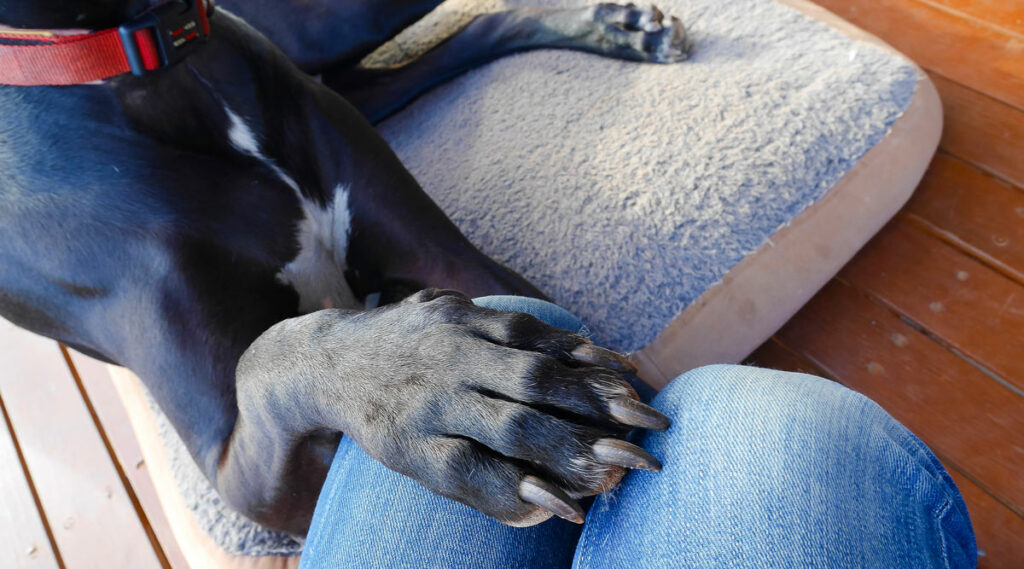
The notion that dogs are trying to dominate us and be pack leader is outdated. However, you’ll be amazed at how many people still think this is true. There are even some professional dog trainers out there who use this idea to rationalise punishment to solve problems.
As dogs evolved from wolves, it is assumed that all behaviour and communication will be the same. Unfortunately our idea of how wolves behave is based on studies of wolves in captivity, none of who were related – so some pretty big fights broke out!
Next time your dog puts his paw on you, notice their expression and body language – does he look like he’s trying to put you in your place? Or do the reasons above seem more realistic?
How to Stop a Dog Putting Paws on You
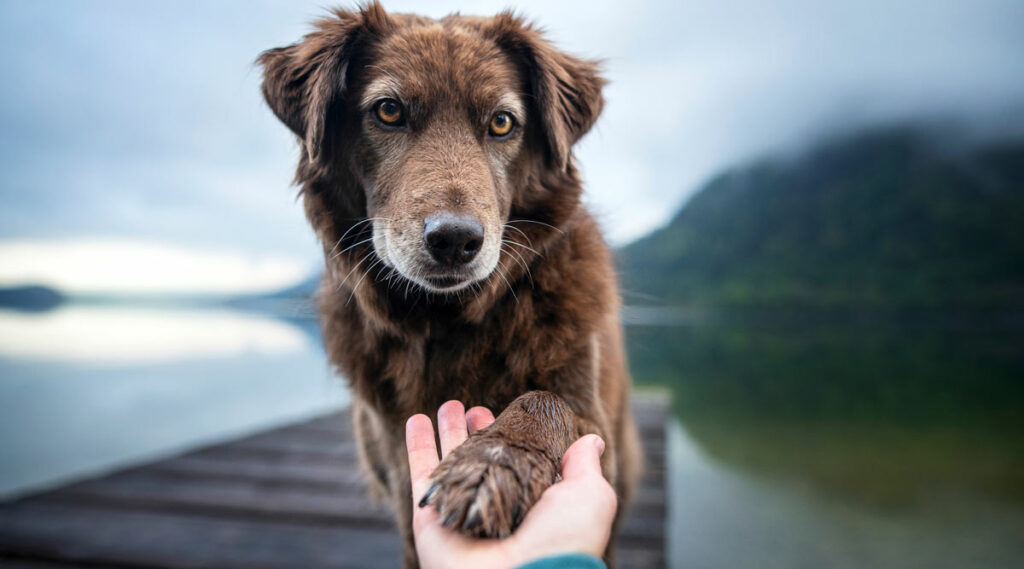
However sweet it can seem, there are times when we’d rather not have a paw on us – particularly if it’s dirty, we are wearing delicate fabrics, or trying to concentrate on something else. Also, if you have a large dog with big paws, they may unintentionally scratch you, which can be quite painful!
There are a few ways you can tackle this kindly without resorting to harsh methods.
- Ignore any pawing (unless your dog is showing signs of anxiety or insecurity) – Try not to even give your dog eye contact, which can be enough attention to reinforce the behaviour. Move yourself out of reach, then wait for a pause in the pawing. Once the pawing stops, continue interacting with your dog as you normally would.
- Stay consistent. Don’t confuse your dog – if you don’t want him to paw you, never give attention when he does.
- If your dog is frequently pawing when he wants something, try to see his needs are met before you sit down and relax. Is he getting enough exercise and mental stimulation? Indoor games, puzzle feeders, and toys can help if your dog is bored, although nothing can match a walk.
- If you aren’t keen on being pawed when you’re petting your dog, try and angle your hand in a position that is harder for him to paw, such as at the side of his body. You can also remove your hand as soon as the pawing starts. Remember, dogs have their own likes and dislikes about where they want to be stroked, so if you are changing the area you usually pet, make sure they still enjoy it.
Do you have any questions about your dog putting his paw on you? Let me know in the comments! You may also want to read our guide to why dogs stretch on their owners.
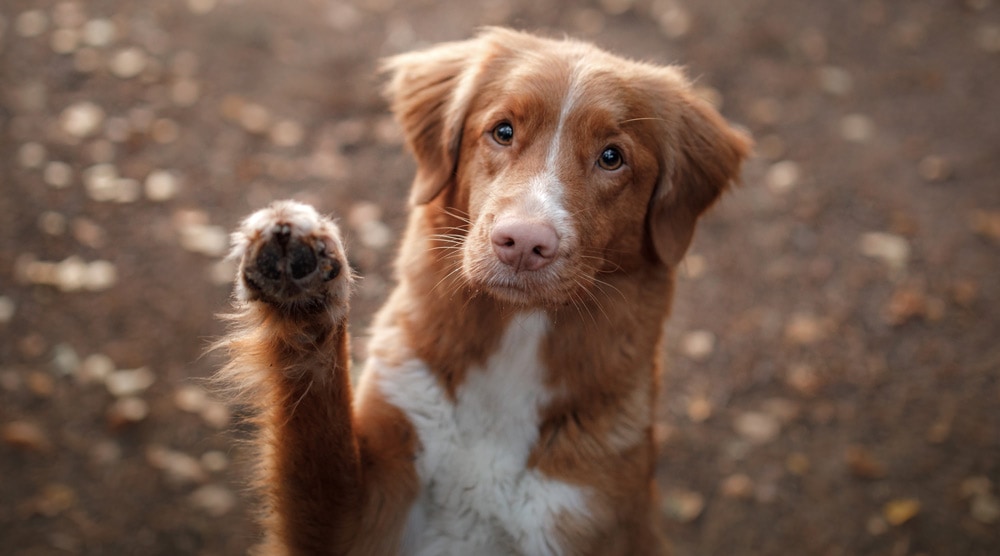

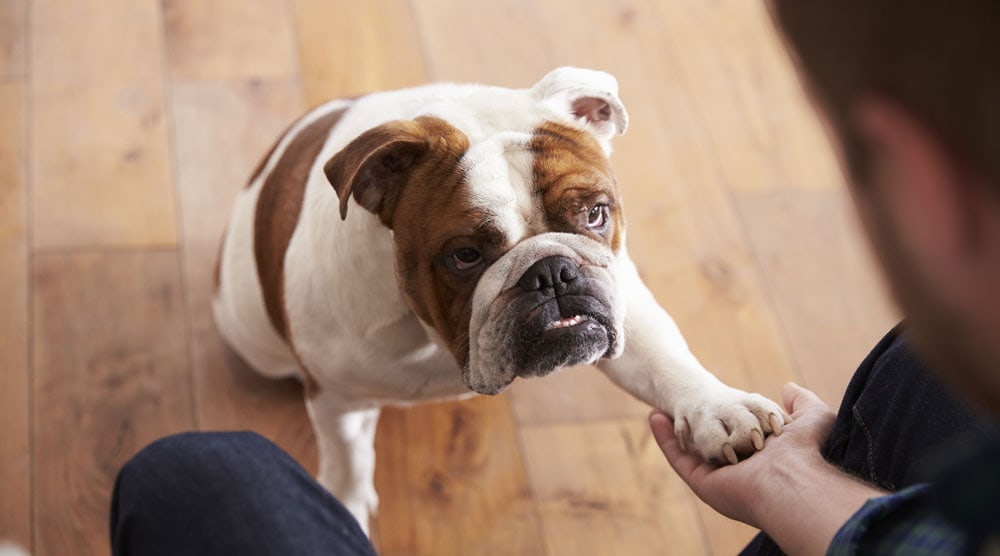
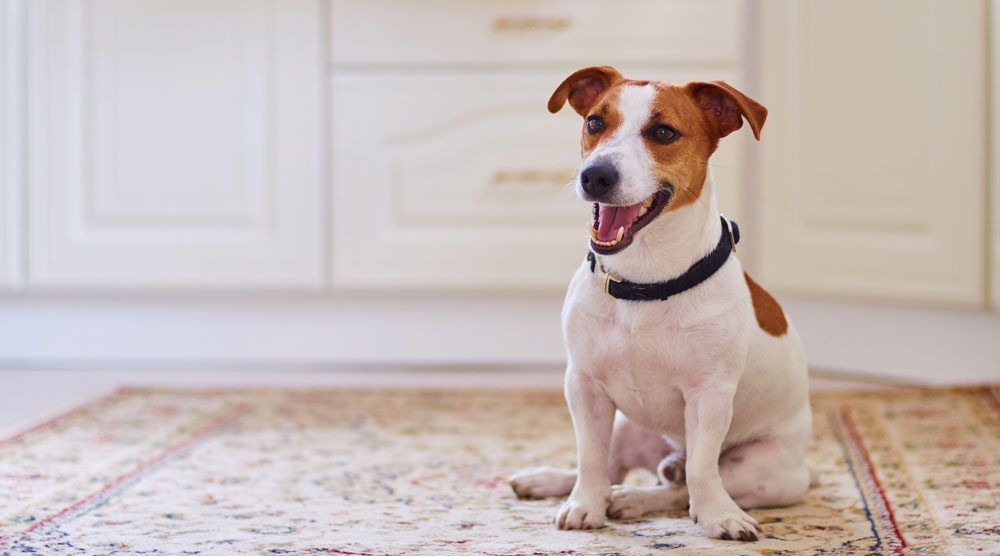
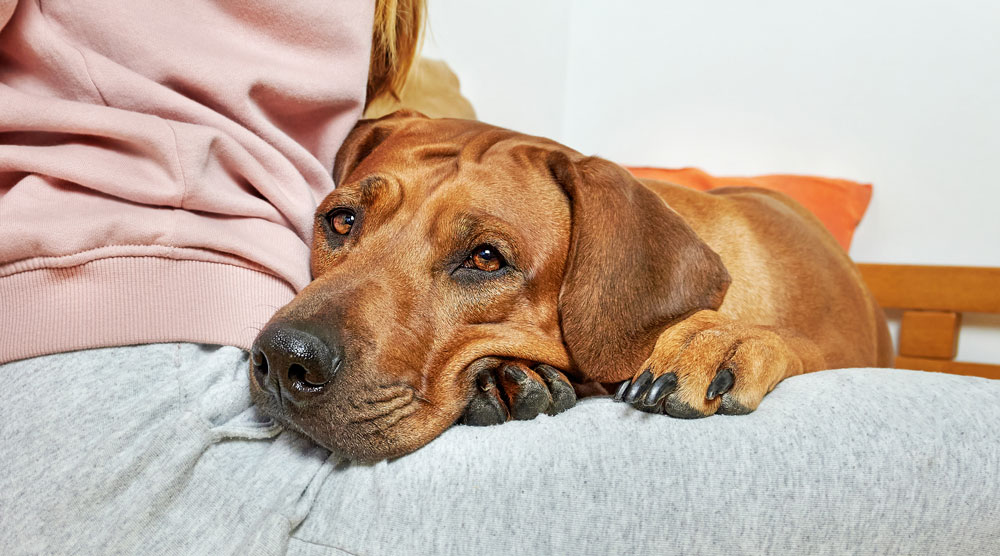
I love when my puppy puts her paw on my leg. I think she is saying “I love you” or “let’s play!”
Hi,
My 3year old toy poodle puts a paw on me when he’s resting and sleeping, until it slips off. I like to think that he just wants to know I’m there. Also one of my cats does the same thing and if I try to move him, or I move myself, he just followed me and immediately does the same thing. He’s nearly 10 years old and has done it for all his life
From Claire x
Your comments on why a dog puts his paw on you was very informative. Thank You
Nice article. Currently have a Golden Retriever. This is my 4th. All have been responsive to almost all commands. Wonderful “friend”. They all liked to travel & their behaviour is wonderful.
Wish they cud live at least 50 years. I miss all of them.
Best dog anyone cud have.
Nice article. Enjoyed it..my dog loved it.
Wonderful and quite interesting article indeed! I enjoyed it
My dogs talk to all the time,they even smile at me every day. If I am sick they watch over me. They are my children.
My 17mo old boxer scooted back to our legs at the vet and growled.she then scooted on her belly and placed a paw on vet.the vet told us she showed vicious behavior and to put her down. She never showed aggression,never growled or bit anyone before.we are heartbroken after hearing this.what should we do?
I’m not a vet, but it would be madness to put a dog to sleep because she growled and put a paw on someone!
Growling is normal method of communication for dogs. Dogs often growl when they feel threatened or anxious, and this is a warning that the dog is feeling uncomfortable. It’s not surprising that the dog feels this way in a veterinary surgery, which is often stressful.
Scooting on the belly is a sign of appeasement and anxiety. It’s not aggressive. Neither is putting a paw on someone.
I’m in shock that the vet would recommend this type of action for something so minor (and completely understandable behaviour from the dog’s point of view.) It’s impossible to diagnose behaviour over the internet, of course, but my advice is to take professional advice from a positive dog trainer before any further action.